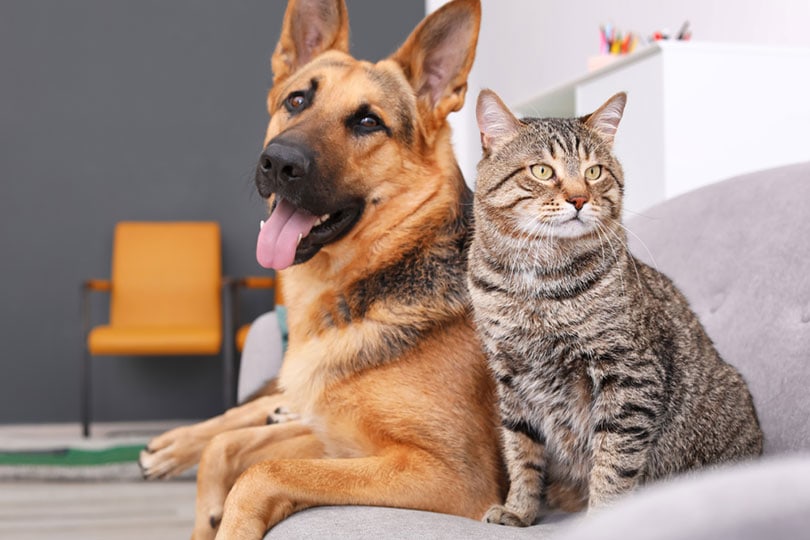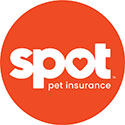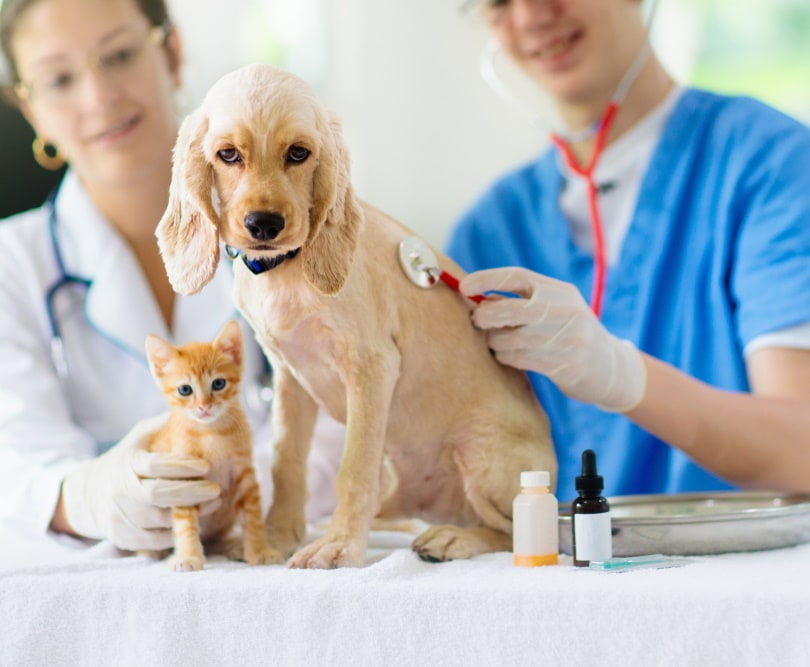Click to Skip Ahead
Over 14 million dogs and cats are kept in Canada as pets, yet less than 3% of owners have purchased pet insurance. Though the pet insurance market is virtually untapped in Canada, it’s been catching on throughout the rest of the world. For example, more than one-quarter of pet owners in Britain have insurance policies for their animals!
If you’ve been on the fence about pet insurance because you don’t know what it entails or how much it costs, we can help. Keep reading to learn about your insurance options as a Canadian, the costs you should consider, and everything else you’ve ever wanted to know about pet insurance.

The Importance of Pet Insurance
Pet insurance is a fantastic investment that provides a financial safety net if your pet falls ill or has an accident. All pet owners know how pricy vet bills can be. This is especially true if your dog or cat has an accident or needs emergency treatment. In situations like this, your pet insurance will kick in once you’ve met your deductible, significantly reducing the cost of your bill.
- Accidental injuries
- Unexpected illnesses
- Chronic diseases (provided they weren’t pre-existing)
- Dental illnesses
- Surgery
- Cancer treatment
- Diagnostic tests
- Hereditary conditions

How Much Does Pet Insurance in Canada Cost?
The cost of pet insurance in Canada will vary greatly depending on where in the country you live and the type of pet you’re hoping to insure. Insurance for cats is generally much less expensive than for dogs, as insurance for canines will depend on your dog’s breed. For example, it is much cheaper to insure a chihuahua than a Great Dane.
It’s not only your pet’s species and breed or your location that will affect the cost of your insurance, though. Many companies allow you to choose your own deductible, annual coverage amount, and reimbursement rates, essentially providing you the opportunity to choose a monthly rate that suits your budget.
Choosing a higher deductible and lower reimbursement percentage will result in a lower monthly payment.
| Company | Accident & Illness (cats) | Accident Only (cats) | Accident & Illness (dogs) | Accident Only (dogs) |
| Pets Plus Us | $44.17–$51.72 | $19.73 | $69.75–$102.23 | $22.06 |
| Pet Secure | $20.57–$69.96 | N/A | $32.51–$156.21 | N/A |
| Trupanion | $63.50–$155.08 | N/A | $84.18–$863.47 | N/A |
| Fetch | $20.66–$34.71 | N/A | $21.92–$195.12 | N/A |
| Sonnet | $27.29–$34.18 | N/A | $43.69–$70.98 | N/A |
| Furkin | $24.00–$32.48 | N/A | $46.95–$153.23 | N/A |
| Peppermint | $17.44–$36.38 | $10.87 | $18.73–$69.13 | $11.96 |
| Desjardin | $24.04–$89.30 | N/A | $32.22–$167.21 | N/A |
The quotes above for cat insurance are based on a Domestic Short Hair. The dog quotes were based on two breeds: Chihuahuas and Great Danes.
Additional Costs to Consider
Many insurance providers offer additional benefits that will make caring for your pet easier on your wallet. You can opt in to this additional coverage but prepare to pay the additional fees.
Trupanion, for example, has a Recovery and Complementary Care Rider that provides hydrotherapy, acupuncture, rehabilitative therapy, and behavior modification coverage. This additional coverage costs $19.87 per month for a chihuahua or $66.94 for a Great Dane. Cat owners can take advantage of this add-on for just $11.58 per month.
Trupanion also offers a Pet Owner Assistance package that provides coverage for advertisements and rewards if your pet is lost, liability coverage for third-party property damage, and cremation or burial deaths (if your pet dies due to an accident). This add-on is $4.95 per month.
Desjardin offers add-on packages as well. Optional dental care can be added to their lowest tier, and additional coverage for alternative and behavioral therapy and medical devices can be added to their middle tier.
Top Rated Pet Insurance Companies
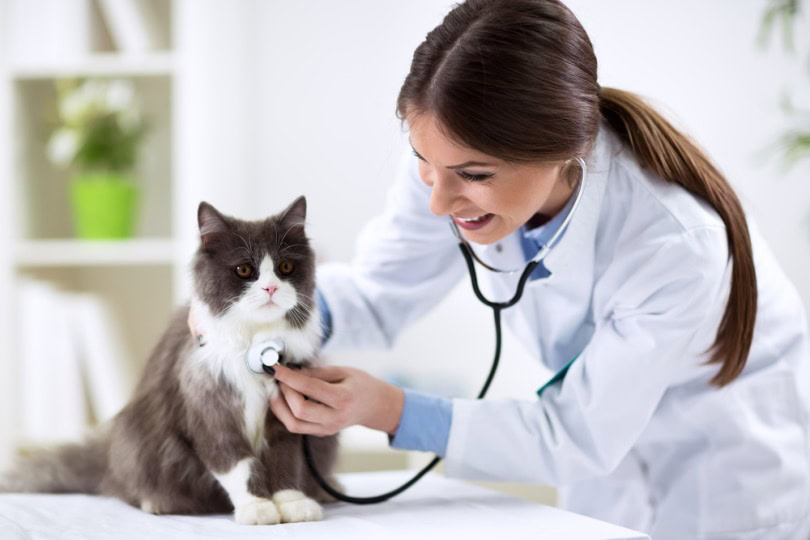
Things to Look for in Your Pet Insurance Policy
Buying pet insurance is exceptionally easy these days. You can receive a free quote in seconds online, and signing up only takes a few minutes from that point. The problem with this conveneince is that many people jump into an insurance policy without first finding out about the provider and what their policies cover.
- Will I get to keep my current vet?
- What are the waiting periods?
- What will the plan not cover?
- Is there prescription coverage?
- What is the deductible?
- Are there caps on illnesses or incidents?
- What are the reviews from current policyholders like?
- Are hereditary conditions covered?
- Are wellness exams covered?
- Are there age limits?
- Is dental coverage included?
- How do I submit a claim?
- How will I receive my reimbursement?

How Does Pet Insurance Work?
There are a lot of complicated terminologies associated with any insurance. If you’ve never had insurance before, it’s perfectly normal to feel a bit overwhelmed and confused. Before enrolling, you must have a solid understanding of your plan’s deductible, reimbursement rate, maximum payout limits, exclusions, and waiting periods.
The deductible refers to what needs to be paid before the insurance provider can start reimbursing eligible expenses. Many pet insurance companies will allow you to select your own deductible.
The reimbursement rate is the percentage of covered vet expenses your provider will pay once you’ve met your deductible.
For example, let’s say your deductible is $500, and your reimbursement rate is 90%. You recently signed up for insurance, and now your dog needs a $1,500 dental extraction. You will first need to pay your $500 deductible, which will then make your vet bill $1,000. With a 90% reimbursement rate, your provider would pay $900, and you’d be left on the hook for the last $100.
The maximum payout limit of your plan will be on a per incident basis or an annual limit.
A maximum payout per incident plan will reimburse you for each new illness or injury. Once you reach the limit, you cannot receive further coverage for that particular injury or disease.
A maximum annual payout plan will have a set limit that the company will reimburse you for each policy year.
Your plan will likely have a maximum lifetime payout which refers to the maximum amount of money your provider will reimburse you during the lifetime of your pet. Once you have reached that limit, your pet will no longer be eligible for coverage.
Exclusions refer to conditions, illnesses, or treatments your insurance policy will not cover. Exclusions typically apply to pre-existing conditions, vaccinations, prescription food, spaying or neutering procedures, prosthetic limbs, cosmetic surgeries, and autopsy expenses.
The waiting period will determine when your pet’s coverage will begin. Every provider has its rules regarding waiting periods, and some can vary by condition. Read your policy thoroughly to understand when you can start making claims.
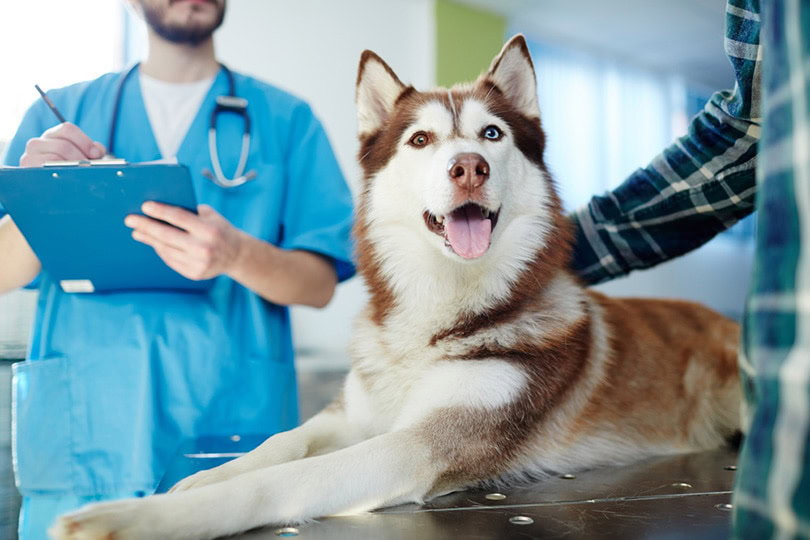

Conclusion
Shopping for pet insurance can feel incredibly overwhelming at first. There are many providers to choose from, so take your time when shopping around for the best policy. Read every policy thoroughly to ensure you understand the ins and outs of your plan. Don’t be afraid to contact a pet insurance representative so you can speak to a real person on the phone to voice your questions and concerns before enrolling. Pet insurance is a fantastic investment, but you need to ensure the plan you settle on is the right one for your needs.
Featured Image Credit: New Africa, Shutterstock
